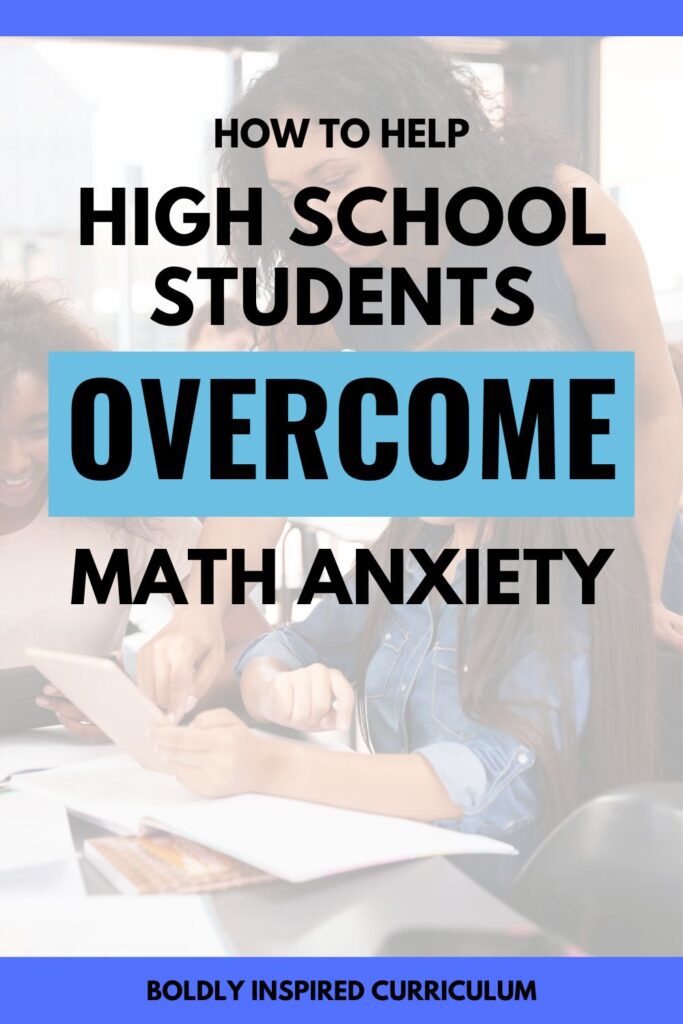Let’s talk about math anxiety and negative automatic thoughts. In most children, math anxiety starts at a very early age. Usually, these students are not exposed to math and numbers before kindergarten and enter school at a disadvantage.
As soon as they start elementary school, the comparisons between peers begins. The students realize that there are others in their class that are “better” at math and these types of negative thoughts become engrained in their mind.

Table of Contents
ToggleWhat actually causes math anxiety
School-related anxiety is not a new phenomenon, but it has been increasing exponentially in children and teens over the last decade. The National Institute of Mental Health has shown that nearly 1 in 3 adults have experienced some sort of anxiety in their lifetime. There are so many causes of the mental health decline.
Test Anxiety
Test anxiety is not just nerves before an important exam. For students with test anxiety, there are many physical and emotional reactions that cause poor results. These symptoms range from stomach pain and rapid heartbeat to restlessness and self-doubt. The thought of doing poorly weighs so heavily on these students’ minds that their anxiety takes over completely.
Fear of Being Wrong
In addition to tests, some students get anxious just being in a math classroom. They are terrified of making mistakes, especially in front of their peers. In order to avoid this, they will choose to not participate in the lesson and tell themselves that they don’t know what to do.
I have had students who have completely lost all problem solving skills. Their negative automatic thoughts that have spent years developing causes these students to need constant reassurance and prompting even if they do know the answers.
Comparison
Peer to peer comparisons plays a huge role in the anxiety of adolescents. From my experiences as a student and a teacher, there is a clear divide between the “smart” kids and the “not smart” kids. This fixed mindset is such a detriment to the “not smart” kids.
They are constantly comparing themselves to others, when they should really be focusing on their strengths. When students believe they are not good enough, their motivation decreases and their math anxiety increases.
Nearly 1 in 3 adults have experienced some sort of anxiety in their lifetime.
What can teachers do to decrease their students' math anxiety?
Normalize making mistakes
I can’t even count the amount of times that I have made a mistake while teaching in the last two years. I also don’t care to. My students know that when someone makes a mistake (whether big or small), we fix it and move on. There is no reason to dwell on something that is totally not a big deal.
ALSO, making mistakes is such an important part of learning. I want my students to make mistakes because that means that they are actually problem solving! If we can teach our students to accept that mistakes are a part of the learning process, then eventually they will believe it.
Create a comfortable environment
Environment is more than just what the room looks like and what routines are put in place. How do your students feel when they walk into your classroom? Are they terrified to ask questions or are they comfortable telling you everything about their life?
Connecting with my students and understanding their non-verbal cues is essential for me to understand what they need. I want them to know that they are supported and never judged.
Continue to challenge your students
It is so important to continue to challenge your students even if they are feeling unconfident and nervous about math. By lowering your standards, you and the student are letting their math anxiety win. We cannot allow the fear of failure control our classroom.
Although a student’s work may never be perfect, is that really what math is about? Someone once told me that math helps us solve problems and even though you won’t always have math, you’ll always have problems. Our students may never remember the distance formula, but they will remember the skills they learned to struggle through a challenging problem.
